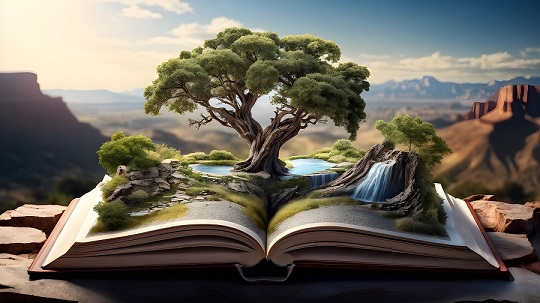Table of Contents
Imagination as Cartographer
Every fantasy story begins with a seed of imagination. That seed grows into landscapes, languages, and legends. For authors this process feels less like invention and more like discovery. A blank page becomes a map. A single sentence can spark a city with its own laws and rituals. When an author sketches a realm it is not only terrain that takes shape but also the unseen weight of culture and history.
Readers are often drawn to these imagined worlds because they reflect something familiar even when they seem foreign. A mountain range may echo the Alps. A bustling port may whisper of Venice. Yet beneath these nods to reality lies an independent spirit. Each realm has its own inner pulse. It feels alive because the author has woven every detail into a living fabric. In a way Z-library connects many different types of books in one place much like a world-builder layers myths politics and geography until a realm feels whole.
Layers Beneath the Surface
The strength of a world does not rest only on castles or dragons. It thrives in the layers hidden beneath. An invented economy can decide the fate of nations. A belief system can dictate alliances and rivalries. When readers sense that depth they trust the story. The smallest mention of a coin or proverb can reveal centuries of heritage.
Authors who succeed in this craft often treat each invented detail with care. They balance what to show and what to leave in shadow. A brief description of a tavern or a half-heard folk song can open the door to an entire culture. These details work like brushstrokes in a mural. Each may seem small but together they create an image that lingers.
To see how authors achieve this balance consider these three key approaches:
-
Geography as Destiny
The land itself dictates story. Rivers shape trade. Deserts forge resilience. Forests hide secrets. When an author grounds characters in physical space every choice they make feels inevitable. Geography becomes not only background but a living force that pushes events forward. A city hemmed in by mountains may value defense while one open to the sea thrives on exchange. Each landscape frames human struggle.
-
Language as Identity
Invented languages or dialects act as roots of identity. They tell who belongs and who stands apart. A phrase unique to one region can show pride while an accent can reveal tension. Readers do not need to master every word. They only need to sense that the tongue has weight and rhythm. In this way speech becomes a cultural fingerprint.
-
Myth as Memory
Myth breathes life into a realm by shaping how people understand themselves. Legends of creation heroes or disasters create a shared memory. When characters refer to these stories in casual talk the world gains depth. The myths may be true or twisted over time but they give texture to daily life. A peasant blessing a harvest or a soldier cursing a forgotten god both carry echoes of myth.
Together these approaches create a sense of place that lingers beyond the page. They explain not only how a world looks but how it feels to walk its streets and hear its whispers.
The Role of the Familiar
Fantasy thrives on invention yet it relies on threads of the familiar. Readers may not know the rules of an invented magic system but they understand rivalry or hunger or the ache of exile. By tying extraordinary settings to ordinary emotions authors create resonance. That is why a saga about warring kingdoms can mirror boardroom rivalries or why a humble hobbit can echo the strength of a neighbor who faces hardship with quiet resolve.
In modern times the growth of e-libraries has widened the reach of these tales. A vast catalog makes it easier for new voices to stand beside old masters. Through Z lib readers discover both epic sagas and quiet fables that remind them how vast imagination can be. This mingling of voices keeps the craft of world-building alive and ever evolving.
Enduring Realms and Their Echoes
Great fantasy worlds never vanish. They remain like half-remembered dreams. Readers return to them years later and find the streets still bustling the mountains still brooding. These realms survive because authors built them not as backdrops but as living entities. They breathe through the struggles of their people and endure in memory like legends passed by word of mouth.
The craft of world-building is more than invention. It is the art of listening to silence and filling it with meaning. When done with patience a fictional realm feels as solid as stone. It becomes a place where stories are not only told but lived.
